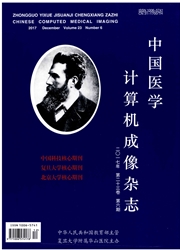

 中文摘要:
中文摘要:
突然在 vivo 循环是到蛋白质治疗学的普遍采纳的一个主要阻碍者。经由显著地展出的一个二拍子的圆舞封装过程与基于 phosphorylcholine 的聚合物的薄层包含蛋白质产生的蛋白质 nanocapsules 延长了血浆半衰期。而且,由与类似的尺寸构造 nanocapsules 但是不同表面费用和化学,我们为延长治疗学的蛋白质的血浆半衰期表明了通用策略。在里面一在里面 vitro 实验,牛的浆液白朊(BSA ) 的四种类型 nanocapsules 在磷酸盐缓冲区与胎儿的牛的浆液(FBS ) 被孵化盐(PBS ) ;由 HeLa 房间的房间举起被监视系统地在循环期间评估表面化学的特征。单个正电子排放计算断层摄影术的断层摄影术(SPECT ) 被采用在静脉内的管理以后在血浆集中的 vivo,以及 quantification 允许 BSA nanoparticle 分发的即时观察。这研究为为临床的使用翻译大量蛋白质提供一个实际方法。
 英文摘要:
英文摘要:
Short in vivo circulation is a major hindrance to the widespread adoption of protein therapeutics. Protein nanocapsules generated by encapsulating proteins with a thin layer of phosphorylcholine-based polymer via a two-step encapsulation process exhibited significantly prolonged plasma half-life. Furthermore, by constructing nanocapsules with similar sizes but different surface charges and chemistry, we demonstrated a generic strategy for prolonging the plasma half-life of therapeutic proteins. In an in vitro experiment, four types of bovine serum albumin (BSA) nanocapsules were incubated with fetal bovine serum (FBS) in phosphate buffer saline (PBS); the cell uptake by HeLa cells was monitored to systematically evaluate the characteristics of the surface chemistry during drculation. Single positron emission tomography-computed tomography (SPECT) was employed to allow real-time observation of the BSA nanoparticle distribution in vivo, as well as quantification of the plasma concentration after intravenous administration. This study offers a practical method for translating a broad range of proteins for clinical use.
 同期刊论文项目
同期刊论文项目
 同项目期刊论文
同项目期刊论文
 期刊信息
期刊信息
